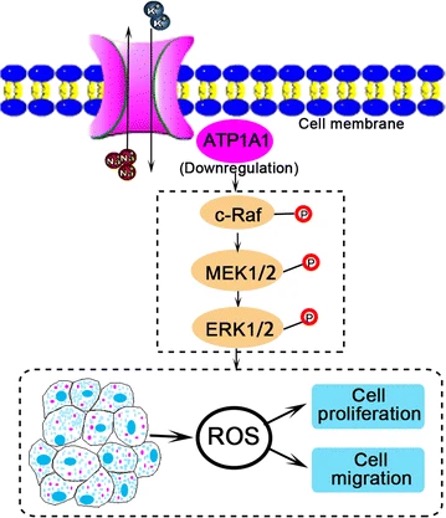ATP1A1 and Associated Diseases
Creative Biolabs is a first-class platform with rich experience in the field of gene therapy development. We integrate global resources to provide global researchers and developers with comprehensive support knowledge about the ATP1A1 gene and associated diseases. Our experts are ready to assist you to understand the mechanisms of action involved in ATP1A1 and its related diseases.
Background of ATP1A1
Na+/K+-ATPase is responsible for maintaining the sodium and potassium ion concentration gradients at the cell plasma membrane. In each pumping cycle, Na+/K+-ATPase extrudes three Na+ ions out of the cell and imports two K+ ions into the cell powered by the hydrolysis of one ATP. The normal function of the Na+/K+-ATPase pumping maintains the function of regulating electrochemical gradients and the action potential propagation during neuronal depolarization.
Na+/K+-ATPase contains several isoforms, including α subunit (α1–α4) and β subunit (β1–β3). The ATP1A1 gene encodes the α1 isoform of Na+/K+-ATPase, which is a transmembrane protein with 1,023 amino acids. ATP1A1 is ubiquitously expressed in the human body and is primarily located in the central nervous system and kidney.
ATP1A1 Associated Diseases and Molecular Mechanisms
The variants of the ATP1A1 form a large number of phenotypic variants, which lead to dysfunction of Na+/K+-ATPase and alteration of cation permeability, resulting in damage to the activity of the physiological pump and membrane depolarization, and thus causing multiple ATP1A1 associated diseases. These diseases involve endocrine syndromes, peripheral neuropathies, neuromuscular disorders, etc. including refractory epilepsy, Charcot-Marie-Tooth disease (CMT), aldosterone adenoma renal hypomagnesemia, hereditary spastic paraplegia (HSP), and intellectual disability.
- Aldosterone adenoma renal hypomagnesemia
For example, somatic mutations of the ATP1A1 gene impair the normal function of the Na+/K+-ATPase pump that permits sodium or hydrogen (H+) ions to get into the cells, which enhances aldosterone production. Hyperproduction of aldosterone results in high blood pressure and hypomagnesemia, increasing the risk of heart attract or stroke and facilitating the adrenal gland cell growth and proliferation to form adenoma. The overexpression of ATP1A1 level could enhance oxidative stress that inhibits cell proliferation and cell migration. Downregulation of ATP1A1 leads to activation of the ATP1A1-mediated Raf/MEK/ERK signaling pathway, which suppresses cell apoptosis. Therefore, ATP1A1 is a potential novel suppressor protein for renal cancer.
- CMT
All Schwann cells and a majority of peripheral nerve axons express ATP1A1. The substitutions of the ATP1A1 gene related to CMT lead to the reduction of Na+-dependent currents, reduction of Na+/K+-ATPase activity, and increased toxic levels of intracellular Ca2+ and thus causing axonal neuropathy and degeneration of motor and sensory peripheral nerves that trigger CMT.
 Fig.1 Schematic summary of ATP1A1 roles in renal cell carcinoma development. (Zhang, 2017)
Fig.1 Schematic summary of ATP1A1 roles in renal cell carcinoma development. (Zhang, 2017)
Understanding the background and pathogenesis of ATP1A1-associated diseases is the priority for developing corresponding gene therapy. Creative Biolabs is a remarkable server in the gene therapy field and offers you a full range of cutting-edge information about ATP1A1 and associated diseases. If you want to learn more support knowledge about the ATP1A1 gene and associated diseases, please directly contact us for more information.
Reference
- Zhang, D.; et al. Downregulation of ATP1A1 promotes cancer development in renal cell carcinoma. Clinical proteomics. 2017, 14(1): 1-12. Distributed under Open Access license CC BY 4.0, without modification.
